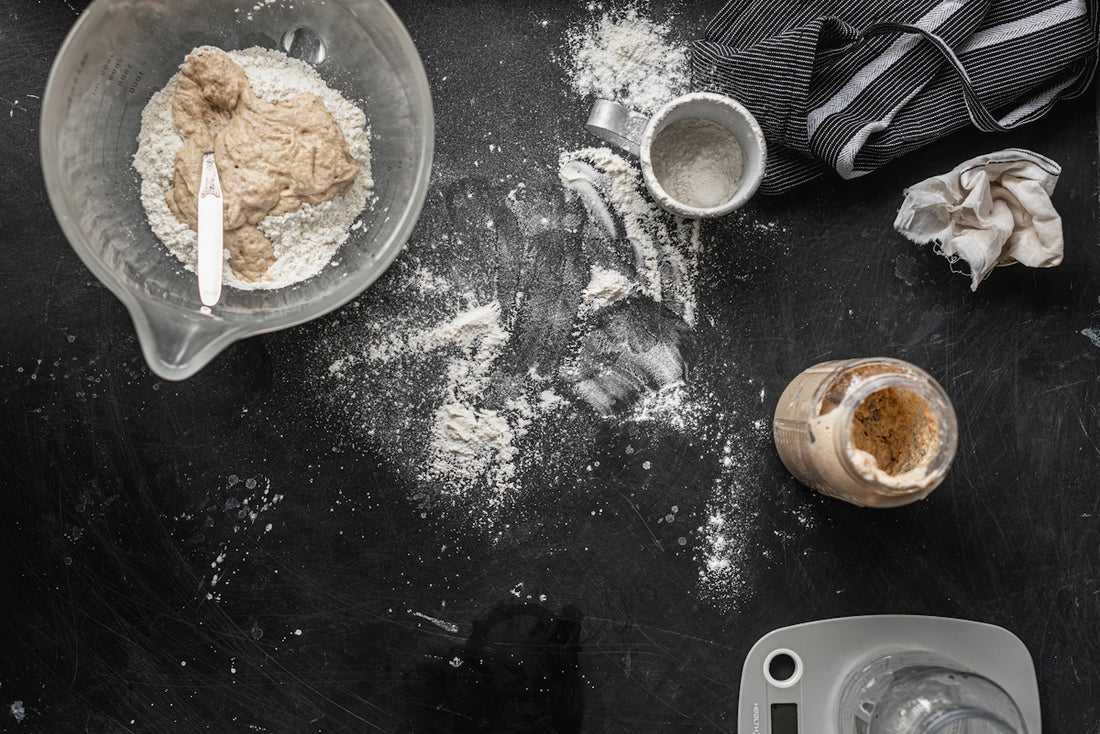
Sourdough Starter Feeding Schedule: What You Need to Know
If you're diving into the delightful world of homemade sourdough, one of the first things you'll encounter is the need to maintain a sourdough starter. This live culture of wild yeast and bacteria is the magic behind the delicious complexity of sourdough bread. Here, we'll cover everything you need to know about a sourdough starter feeding schedule and much more to enhance your sourdough life.
Understanding Sourdough Starter
A sourdough starter is a living mixture of flour and water that provides the natural leavening you need for sourdough bread recipes. Unlike commercial yeast, sourdough starter relies on wild yeast fermentation, which gives your bread its unique flavor and texture. It's a key ingredient not only for baking artisan bread but also for other creations like sourdough pizza dough and sourdough bagels.
How to Feed Sourdough Starter
Feeding your sourdough starter is an essential part of maintaining its life and vigor. Here’s a simple schedule to guide you:
- Preparation: Remove your starter from the fridge if stored cold. Allow it to come to room temperature for an hour or so.
- Discard: Remove a portion of your sourdough starter. Typically, discarding about half is standard practice before feeding to ensure your yeast and bacteria balance remains healthy.
- Feeding: Add equal weights of flour and water to your remaining starter. Stir until fully mixed. For example, if you have 100 grams of starter, add 100 grams each of water and flour.
Tip for Sourdough Baking: Use high-quality flour like organic whole wheat or rye for feeding, as they provide more nutrients for the yeast and bacteria.
Sourdough Starter Feeding Schedule
Consistency is crucial when it comes to the feeding schedule for your sourdough starter. Depending on your baking frequency and climate, your schedule might vary:
- Daily Feeding: Ideal if you bake every day. Maintain at room temperature and feed every 24 hours.
- Every Other Day: Suitable if you're a regular baker but not daily. Store at room temperature and feed every 48 hours.
- Weekly Feeding: Perfect for occasional bakers. Keep your starter in the fridge and feed it once a week.
When adjusting the feeding frequency, remember that warmer climates might accelerate fermentation, necessitating more frequent feeds.
How to Store Sourdough Starter
Storing your sourdough starter can depend on your baking habits:
- Refrigeration: For less frequent baking, keep your starter in a sealed jar in the fridge. This slows down the fermentation process, reducing the need for frequent feeding.
- Room Temperature: Keep your starter at room temperature if you bake daily. Remember to feed it every day to keep it active.
For more tips on sourdough feeding and maintenance, check out our Professional Baking Tools kit, which comes with a sourdough starter jar perfect for storing.
Sourdough Starter Troubleshooting
Every sourdough enthusiast faces starter issues now and then. Here are common problems and solutions:
- Hooch Formation: A layer of liquid on top signals that your starter is hungry. Pour off the liquid and feed your starter more often.
- Bad Smell: A sharp, unpleasant smell may mean unwanted bacteria. Discard any discolored portions and refresh with a healthy feeding routine.
- Inactive Starter: If your starter isn’t bubbling or doubling after feeding, increase the frequency and use warmer water.
Sourdough Starter vs Yeast
Comparing sourdough starter with commercial yeast is like comparing a handcrafted masterpiece to a simple sketch. Sourdough fermentation offers a depth of flavor and texture that yeast can’t replicate. For sourdough for diabetics, this may also be beneficial due to slower digestion rates compared to bread made with commercial yeast.
Sourdough Fermentation Benefits
The benefits of sourdough fermentation extend beyond taste:
- Easier digestion due to the lactic acid bacteria breaking down the gluten.
- Potential improvements in blood sugar levels.
- Complex flavors due to the long fermentation process.
Easy Sourdough Bread
Baking sourdough bread need not be daunting. With a reliable starter and an easy sourdough bread recipe, you'll enjoy fresh, nutritious bread. For shaping techniques, investing in quality equipment like our Oval/Round Bread Rattan Fermentation Basket can help perfect your crumb structure.
Sourdough Baking Tips
For the perfect bake, consider these essential tips:
- Mixing and Folding: Develop gluten structure by periodically folding after initial mixing.
- Scoring: Use a Bread Lame Dough Scoring Tool to create beautifully scored loaves that allow controlled expansion.
- Crispy Crust: For a crusty exterior, bake with steam initially, then let your bread dry out towards the end of baking.
How to Shape Sourdough Bread
Shaping is integral to crafting beautiful loaves. Begin with a gentle pre-shape for dough strength, then proceed to a final shaping to enhance dough tension, ensuring a rise that supports structure and crumb.
How to Bake Sourdough Bread
Finally, baking sourdough bread involves a balance of moisture, heat, and timing. Invest in tools like a pizza stone for even heat distribution. Our 12-Inch Ceramic Pizza Stone achieves that bakery-quality crust by maintaining high, even temperature.
Sourdough vs Regular Bread
Sourdough scores over regular bread with its unique fermentation process, health benefits, and richer flavors. Though time-consuming, the process of artisan bread baking is rewarding, giving you a product free of artificial additives.
Sourdough Discard Recipes
Turn your discard into delicious recipes like pancakes, waffles, and even cookies. By reducing waste and enhancing flavor, sourdough discard can add depth to many recipes in your kitchen.
Final Thoughts
Managing a sourdough starter requires commitment, but the results are well worth it. With patience and practice, you can master sourdough starter feeding schedules, achieve baking excellence, and maybe even dabble in sourdough pizza dough or Italian sourdough bread. For quality baking enhancements, explore our trusted tools and accessories tailored for the aspiring artisan baker.
For more resources, tools, and insights, head to Italian Sourdough.
